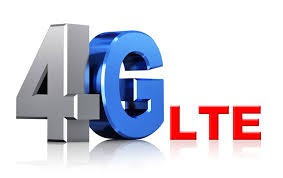
© copyright junkmail.co.za
4G Network Architecture
OFDM - Othogonal frequency Division Multiplexing
MIMO - Multiple Input Multiple Output
4G LTE = 4th Generation Long Term Evolution
3G-HSPA+ technology has squeezed a fast capable network from the 3G mobile phone network. But there is still a demand for more speed and more capacity within the network. To do this a new generation of network was proposed that would have a speed of 100Mbps. However 4G was released with a much lower speed capability. By it's nature 4G LTE is an evolution of the previous 3G / HSPA+ technology. There were a number of technologies capable to delivering 4G but the evolution from previous networks was seen as the next solution. The aim of 4G LTE is to achieve higher capacity, reduced latency and more efficient use of the spectrum.
4G LTE is an IP (data) only network with no provision for a separate phone or text channel. Initially the phone and text function was covered by earlier 2G/3G networks. Thus to obtain either of these functions the phone would drop the 4G connection and then connect to one of these networks. This lead to early complaints that 4G phones could not make phone calls; the phone was connected to 4G but could not find a suitable 2G or 3G network to make the phone call. More recently phone and SMS apps have been developed that use the 4G data network.
Two new frequencies were available for the MNOs to bid for in the introduction of 4G. 800MHz was seen as the 4G for rural, or at least non urban, use and 2.6Ghz for city centre use. The 1800MHz 4g service was used by EE who, following the merger or Orange and T-Mobile, had spare capacity on this frequency. EE were allowed to use this spare capacity to release 4G before the other operators. As part of the deal THREE were given some of this 1800MHz frequency in an attempt to share out the scarce frequency in a more equitable way. As part of the bidding for frequency process, in the UK, one bundle included the additional requirement of a Public Service Obligation - one operator must guarantee a 98% population coverage for 4G. This was purchased by O2.
Typically in a 3G network the communications use the same frequency split into equal size channels. In 4G there is capability to differ the channel size, and use multiple channels even over different frequencies. A mix and match of the technologies to implement this gives 4G better performance as it used the available frequency more efficiently
| UK 4G Frequencies | 800MHx | 1800MHz (Not part of bid) | 2.6GHz | Paid |
| EE (Now owned by BT) | 2x5MHz | 2x45MHz | 2x35MHz | £588,876,000 |
| BT | - | - | 2x15MHz 1x20MHz (unpaired) | £186,476,000 |
| Three | 2x5MHz | 2x15MHz | - | £225,000,000 |
| O2 | 2x10MHz | - | - | £550,000,000 |
| Vodafone | 2x10MHz | - | 2x20MHz 1x25MHz (unpaired) | £790,761,000 |
4G LTE is an evolution of the previous 3G HSPA+ network, and as an IP only network is simplified providing better performance. there are 3 key technologies behind 4G :
- SAE - System Architecture Evolution
- OFDM (Orthogonal Frequency Division Multiplexing)
- MIMO (Multiple Input Multiple Output)
SAE - System Architecture Evolution is one of the key technologies behing 4G. In essence it means that the network has been evolved from the previous network(s). The general way 2G 3G and 4G work is the same, as can be seen from the generic network system diagram. In 4G this has led to a simplified netword as 4G is an IP based network and has no circuit switching to support text or phone calls.This speeds up switching significantly. To improve speed some of the core functions are moved to the periphery, there is more processing nearer to the wirless network rather than moving processing to the centre / core. Additionally there have been further efficiency gains in the network functions.
*u* ©mobilephonetechnology.co.uk all rights reserved 2017- 2025



